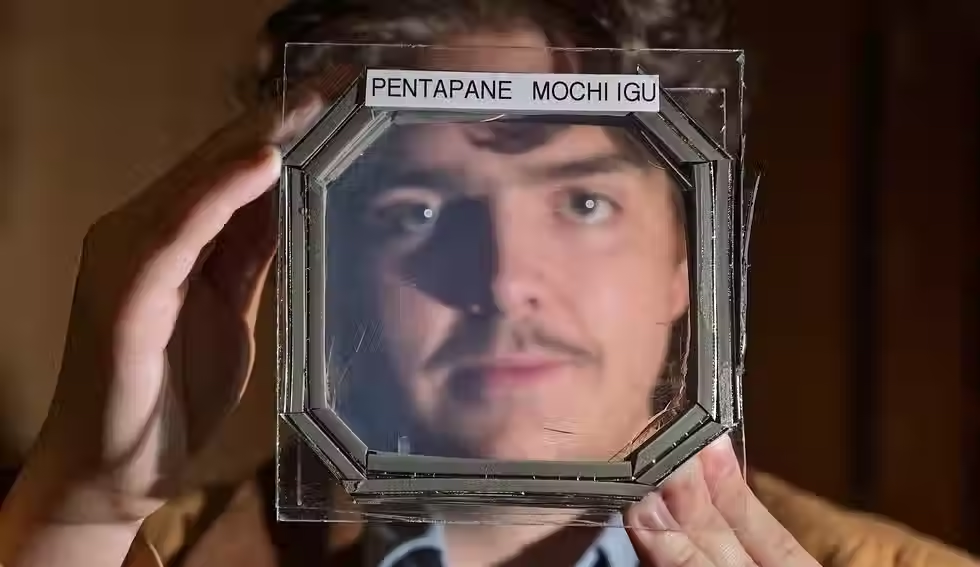A tailor-made magnetic vortex
- Mateo Cardinal
- Jul 20, 2023
- 3 min read

Skyrmions are microscopic magnetic vortices that can form in certain materials. First detected in 2009, they are of interest to research because they could be harnessed for new forms of data storage. As theoreticians had predicted, there are also so called antiskyrmions, which were eventually discovered ten years after skyrmions. Researchers from the Helmholtz-Zentrum Dresden-Rossendorf (HZDR), the Max Planck Institute for Chemical Physics of Solids, the Leibniz Institute for Solid State and Materials Research Dresden, and the University of South Florida used an ion beam saw and sophisticated measurement techniques to get to the bottom of this complex phenomenon, as they report in the journal Communications Materials. “In a sense, an antiskyrmion is the antiparticle of the skyrmion. Both are called quasiparticles, which owe their properties to the collective interaction of a large number of particles in solid matter. Their properties differ greatly from those of their underlying elementary particles,” says Dr. Toni Helm of the Dresden High Magnetic Field Laboratory (HLD) at HZDR. Helm uses a metaphor to illustrate the behavior of the two quasiparticles: “In special materials, microscopic skyrmion vortices form in a sea of magnetic particles and behave quite strangely. A ‘magnetic’ seafarer approaching them would either be attracted or repelled. Antiskyrmions, on the other hand, would be almost impossible to find because these peculiar ‘anti’ vortices combine the different behaviors of skyrmions within themselves.”
A characteristic footprint hidden in electrical signals
As this analogy suggests, antiskyrmions are quite difficult to detect. But Helm’s team followed a theoretical prediction that points to a way to discover them. Due to their unique geometric properties – their topology – antiskyrmions cause additional voltage in the electrical conduction of the material. The team combined electrical measurement methods with magneto-optical microscopy to reveal the electrical signature of antiskyrmions in the material studied for the first time.
The characteristic footprint of the magnetic anti-vortex is hidden in the so-called Hall effect. To attain it, an external magnetic field is applied perpendicularly to the direction of the current and deflects it. Any topological vortices that are present generate a local magnetic field that causes additional voltage. According to the theory, this signal is directly connected with the topology of the vortices. This is how skyrmions could be distinguished from antiskyrmions by measuring the Hall effect. “Our study suggests that this contribution is extremely small and that the signature measured is mainly due to the magnetic properties of the antiskyrmions. Our results help to distinguish the actual Hall signature better from other effects and give a first estimate of its magnitude, which refutes previous research results,” Helm summarizes.
Scalable: The smaller, the more structured
For the study, Helm’s team used a particular magnetic compound from the class of Heusler compounds, made of the metals platinum, manganese, and tin. These crystalline compounds behave differently from what their composition would suggest. For example, they are ferromagnetic, although none of their elementary building blocks is ferromagnetic in itself.
Under certain conditions, various topological structures such as skyrmions or antiskyrmions can form in the compound studied. And the scientists noticed another fascinating detail: The size of the antiskyrmions depends on, and can be controlled via, the thickness of the sample. “They are not detectable in a big chunk of starting material, but they do occur when the material is cut into flat slices less than ten micrometers thick,” Helm explains. The physicists use a kind of ion beam gun to saw the crystals of the starting material into tiny pieces.
Scalability plays a crucial role in technological applications. Nanoscale devices are needed, for example, to create novel magnetic storage and data transmission systems based on quasiparticles. In collaboration with colleagues from the HZDR Ion Beam Center, the team researched further properties of the material and incorporated these insights into supplementary theoretical calculations and simulations. Helm’s team was thus able to substantiate the existence of antiskyrmions and show precisely how they can form in a highly complex magnetic environment.
Outlook
Helm sees potential for future IT applications: “Skyrmions are now considered candidates for quantum bits, or qubits for short, to be used for data storage in topological quantum computers. If that works, it would apply just as well to our antiskyrmions.”
From a technological point of view, the future belongs to materials in which such effects can be produced at lower magnetic field energies. Heusler compounds are of particular interest because they can be modified in many different ways using targeted chemical processes. Reference Antiskyrmions and their electrical footprint in crystalline mesoscale structures of Mn1.4PtSn
Moritz Winter, Francisco J. T. Goncalves, Ivan Soldatov, Yangkun He, Belén E. Zúñiga Céspedes, Peter Milde, Kilian Lenz, Sandra Hamann, Marc Uhlarz, Praveen Vir, Markus König, Philip J. W. Moll, Richard Schlitz, Sebastian T. B. Goennenwein, Lukas M. Eng, Rudolf Schäfer, Joachim Wosnitza, Claudia Felser, Jacob Gayles & Toni Helm



























Comments